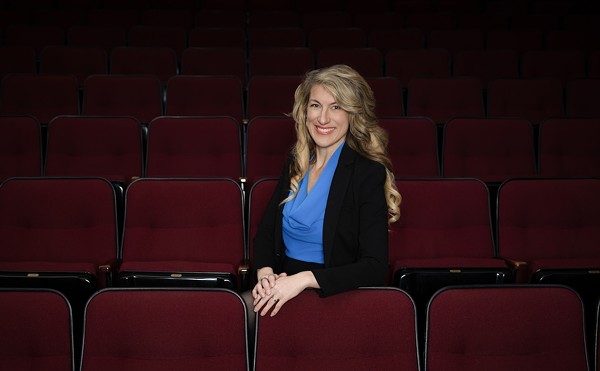David Levinthal: Baseball Series For the first exhibition at her new photography gallery, Ellen Curlee plays it "safe," lining up more than a dozen wonderful baseball photographs by David Levinthal, known for his mock-monumental Polaroid prints of toy figurines. Here he's got home-team favorites Ozzie Smith, Albert Pujols and Bob Gibson in poses so real you'd swear they weren't plastic, plus appearances by Jackie Robinson, Yogi Berra and Ty Cobb, among others. With or without peanuts and Cracker Jack, it'd be an error to miss this exhibition. Through September 11 at the Ellen Curlee Gallery, 1308-A Washington Avenue; 314-241-1299. Gallery hours 11 a.m.-6 p.m. Tue.-Sat.
Nature and the Nation: Hudson River School Landscape Painting from the Wadsworth Atheneum Anyone who has looked at enough of them knows that landscapes are never innocent mirrors of the land. The landscape is perhaps the most loaded of all painting genres, as it reveals not only the aesthetic practices of its age but also the ideological investment a nation has in its land. This exhibition of about 50 canvases reveals some of what the land meant for Americans in the mid-nineteenth century. The land symbolized promise, certainly, and its beauty and wealth were taken as visual revelations of Manifest Destiny. But the land was also the site of conflict, both philosophical and physical. Here are some of the most beautiful, and most revealing, landscapes ever produced in this country, from Asher B. Durand's romantic views of the Hudson Valley to Frederic Church's dramatic grand visions to Thomas Cole's subtle philosophical convictions about how people could and should live in a balance with nature. The exhibition contains vital lessons about this nation's complex relationship to land, and all that it represents. Through September 11 at the Saint Louis Art Museum, 1 Fine Arts Drive; 314-721-0072. Museum hours 10 a.m.-5 p.m. Tue.-Sun. (open Fri. till 9 p.m.)
Textiles as Emotional Landscape Despite the confining title, this first installment of the sixth biennial, multivenue Innovations in Textiles event hints that this year's textile extravaganza will be a good one. There's a lot of variety here: thirteen artists, dozens of works and plenty of stuff beyond what you'd expect. Sure, there are the inevitable quilts, but they're unusual in their richness and experimentation (don't miss Hannah Gilk's Relationship Torment (2005), which contains fragments of images that tell the story of a love gone bad). A handful of aprons take humorous feminist turns, such as Libby Reuter's Two Ways of Being Male (2005) and Dawn Ottensmeier's Has Anyone Seen My Hormones? (2005). Kay Wood and M.J. Goerke have created books out of old photos transferred to fabric and then quilted -- they're the ultimate in family keepsakes. Sue Eisler's pieces, a wire sculpture from 1976 and a paper piece from her "Ongoing Permutations" series (2003), are refreshing to see in this new context. But the most striking works are two sculptures by Jane Birdsall Lander: Ancestor (2005), a wall fetish of knotted waxed linen and thorns, and the astonishing In This County (1992), which taps into the sublimated strains of ritual and sacrifice that run through rural cultures. Through October 5 at the Regional Arts Commission gallery, 6128 Delmar Boulevard; 314-863-5811. Gallery hours 10 a.m.-5 p.m. Mon-Fri., noon-5 p.m. Sat.-Sun. -- Ivy Cooper





